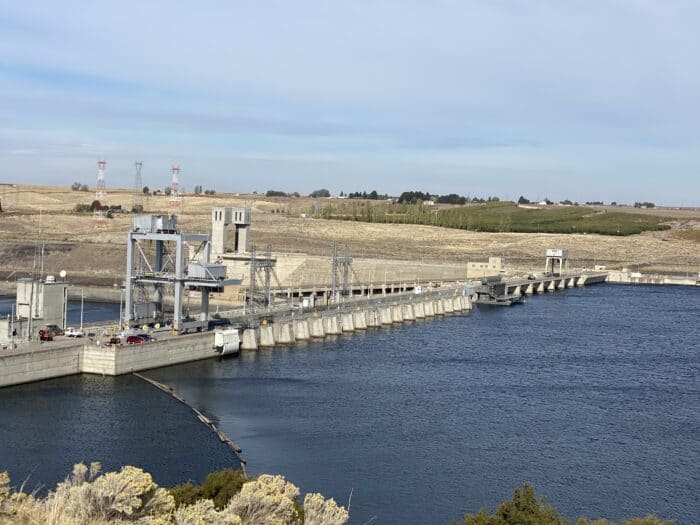OPALCO Renewable Energy Community Meetings Recap
A few weeks ago, the OPALCO team held a series of community meetings about local, renewable energy. The meetings were held at all three major islands to engage co-op members on the energy future of San Juan County.
At each meeting, OPALCO gave a short presentation summarizing the current issues. Due to climate impacts, carbon reduction legislation, and the move to renewable energy, the region is facing energy shortfalls. As the population grows and people transition to electricity for heating and transportation, OPALCO is looking at ways to meet this increase in energy demand and to work with co-op members to talk about some of the trade-offs that come with any energy source.
About 100 people in total attended the meetings held on San Juan Island, Lopez Island, and Orcas Island. Topics covered included:
- Planning for 30% Load Growth as predicted by the San Juan County Comprehensive Plan
- How rooftop solar helps meet the demand but cannot completely satisfy the increase in electrical demand alone
- How conservation is critical but must be combined with energy generation to meet the demand
- Permitting and land use challenges – many local land-use designations do not allow renewable energy projects
- Suggestions and energy solutions from members – nuclear, natural gas, battery storage, tidal power, demand management
- Conversations about which type of energy solutions may be realistic or viable in our service territory
- How to juggle permitting predictability through essential public facility designations and preserving robust public input
OPALCO plans to continue to engage members on this topic as the co-op explores the various energy solutions available.
When asked “Why can’t we just deploy microgrids faster” OPALCO General Manger, Foster Hildreth explained that the current land use designations were designed when diesel generators were the main source of power generation in the islands, so there are heavy restrictions both environmentally and in land-use designations for any power generating facility – even if it is renewable energy. Current permitting complications make these projects slow to plan and approve. Another member commented, “I don’t want my member money spent on solar farms.” The team responded by clarifying that Community Solar projects are funded by the people who invest in solar shares for that project.
There were many other comments throughout the events that showcased the various opinions and tradeoffs OPALCO is facing as they explore these solutions, such as, “I’m curious about costs to update to smart grid infrastructure” and “What’s the problem with getting ‘solar farm’ on Lopez, Orcas, San Juan, – sheep can run under solar panels – I have seen it in Europe and New Zealand.” Some other folks expressed concerns such as “I don’t think OPALCO should pursue solar (which is not that effective in NW WA & that is why you see ONLY Decatur & Mukilteo) at a point when federal funding has stopped, the cables need replacement & public support is split.”
Written comments were generally supportive of renewable energy but there are still lots of questions to be answered. OPALCO will continue to engage on this topic with co-op members. Please reach out to communications@opalco.com if you have questions.



